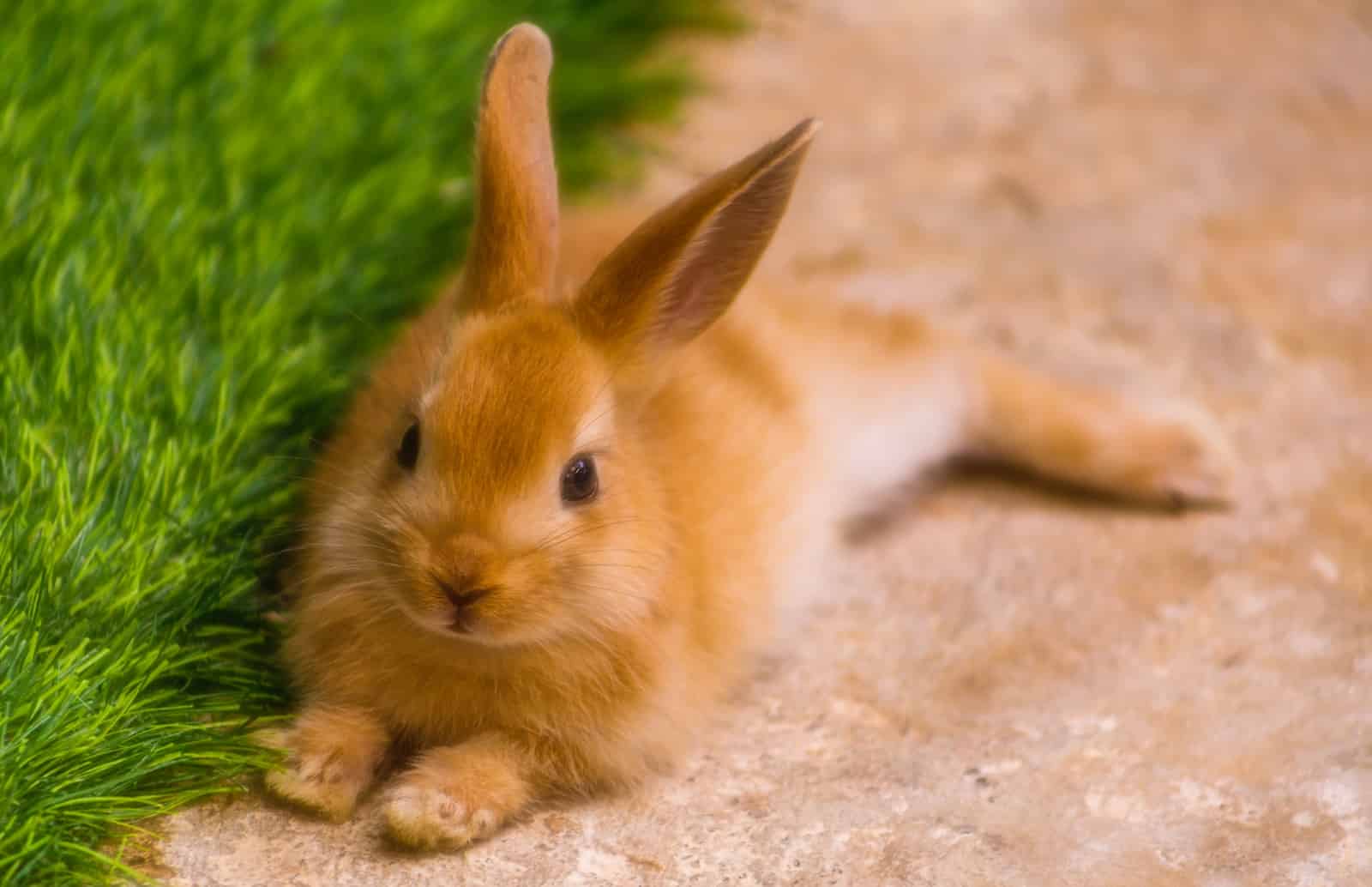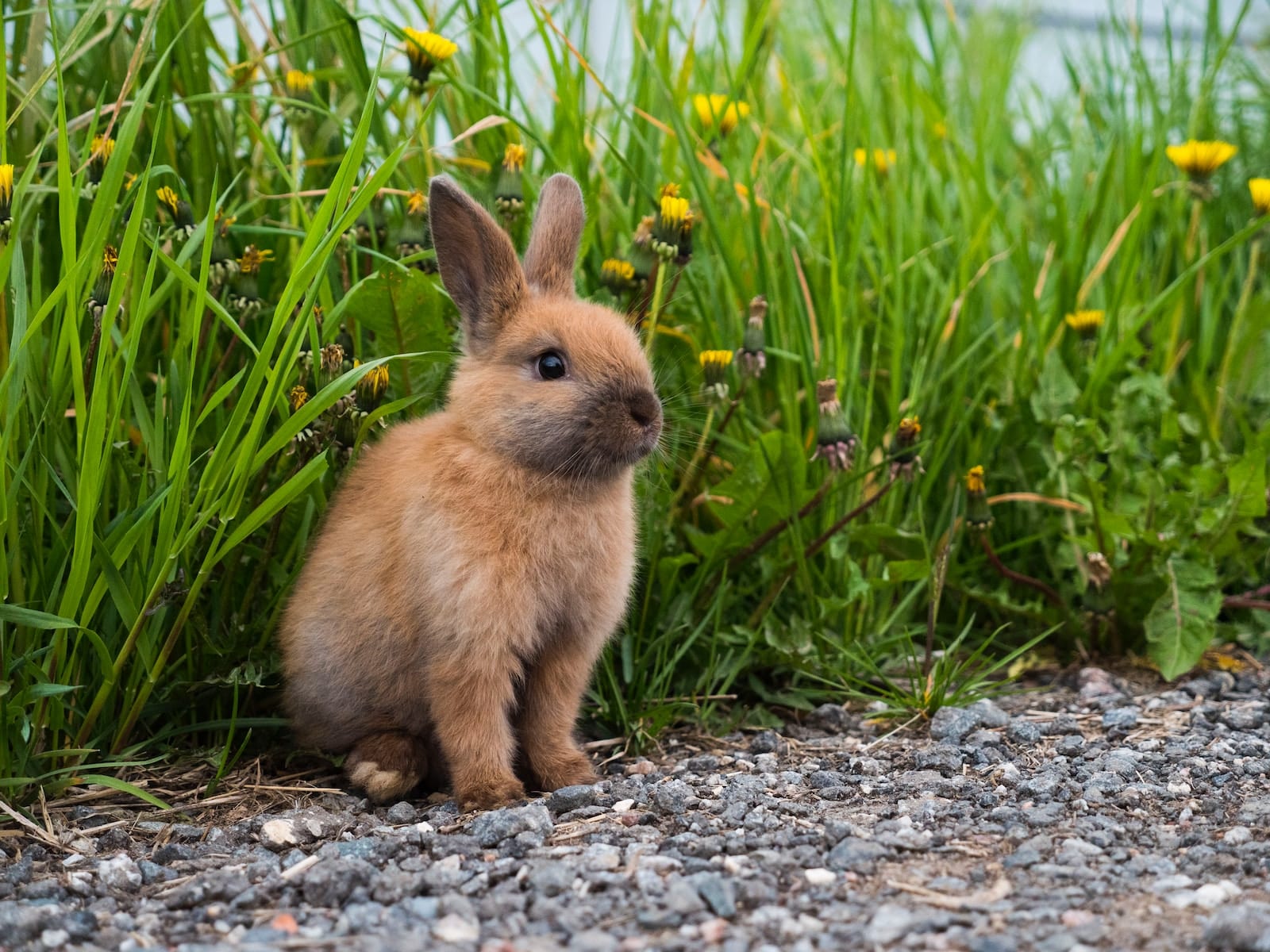How to Bathe a Rabbit: A Friendly Guide to Clean your Rabbit

Sharing is Caring!
How to Bathe a Rabbit? People seem to be familiar with conventional pet cleaning methods used for cats or dogs like bathing or showering. However, these methods are not meant for every kinds of pet, especially rabbits. Some of you may think you should bathe your rabbit when there is any dirt on it. Due to bunny’s unique physiologcal and psychological characteristics, it is advised that a rabbit should not be bathed unless there is any health problem requiring the owner’s intervention. In this article, we will explain why bathing is not idealistic for a bunny, what is its consequences if you bathe a rabbit and how to bathe a rabbit besides bathing it.
Common Misunderstandings for Beginner Rabbit Owners

One of the most prevalent misconceptions among novice rabbit owners is the belief in the necessity of routine bathing, akin to dogs. This misunderstanding stems from a lack of awareness about rabbits’ unique grooming behaviors. Unlike dogs, rabbits are meticulous self-groomers with an innate ability to maintain their own cleanliness. They possess a specialized grooming claw on their front paw, which they use to clean themselves thoroughly. Subjecting them to frequent baths not only disrupts this natural grooming process but can also lead to a myriad of health issues.
Rabbits find the experience of being submerged in water deeply distressing, triggering stress-induced responses that can have adverse effects on their well-being. This unnecessary stress can lead to a weakened immune system and digestive disturbances, impacting their overall health.
Why You should not Bathe Your Rabbit?

It’s imperative to understand that rabbits possess unique physiological and psychological traits that make bathing an uncommon and potentially risky practice. Firstly, rabbits are prey animals by nature, and water exposure triggers a sense of vulnerability. Their anatomy, specifically their spine and limbs, is not suited for aquatic environments, making them susceptible to fractures when thrashing or struggling in water.
Moreover, when rabbit fur becomes wet, it tends to clump together, making it exceedingly challenging to achieve complete dryness. This prolonged dampness can predispose rabbits to respiratory infections and even hypothermia, especially if they’re unable to access a warm and dry environment promptly.
Risks and Diseases Associated with Bathing a Rabbit
1. Hypeothermia
Rabbits, just like other mammals, are homeotherm, which have constant and relatively higher temperature than the environment to maintain the function of all the inner organs. Therefore, rabbits are particularly sensitive to temperature changes as they can not immediately change their internal body temperature to the environment. Thus, being wet during bathing can lead to rapid heat loss. Although you know how to bathe a rabbit, it still puts them at risk of developing hypothermia, a potentially life-threatening condition where their body temperature drops dangerously low. Ensuring the bathing area is warm and that the drying process is thorough is crucial in preventing this.
2. Panic attack when you bathe a rabbit
This is the major problem in the topic “how to bathe a rabbit” as rabbits are prey animals, and being submerged in water can trigger severe stress and panic. This can result in a rapid heartbeat, erratic behavior, and even respiratory distress. It’s essential to handle rabbits gently and provide a calm, soothing environment during any bathing process to minimize the risk of a panic attack.
3. Bones break if you bathe your rabbit
Rabbits have delicate skeletal structures, and the thrashing or struggling behavior they may exhibit during bathing can lead to bone fractures. Their spines, in particular, are vulnerable to injury if not handled with extreme care. This underscores the importance of a secure hold and gentle handling techniques. In fact, not anybody know how to bathe a rabbit gently so this problem is likely to happen.
4. Infections easily happens if you bathe your rabbit incorrectly
If you bathe your rabbit incorrectly, the risk of infections is totally there. When water gets into a rabbit’s ears or eyes, it can lead to ear infections or eye irritations. Additionally, if the rabbit isn’t dried thoroughly, damp fur can create an environment conducive to bacterial growth, potentially leading to skin infections or respiratory issues.
5. Losing natural oils on rabbit’s skin
Bathing strips a rabbit’s fur of its natural oils, which are essential for maintaining healthy skin and a glossy coat. These oils help protect against external elements and keep the skin moisturized. Without them, a rabbit’s skin may become dry, irritated, and more susceptible to various skin conditions.
When you should know how to bathe a rabbit?
Since bathing a rabbit is not advised by any professional vets, you do not need to know how to bathe a rabbit unless the present condition of your rabbit require you to do so. There are specific instances where bathing is a medical aid to take care of unhealthy rabbit.
One such situation arises when a rabbit exhibits recurrent soiling of their back end with caecotrophs or urine. These conditions may be indicative of underlying health issues, including dental problems, spinal or arthritic pain, excess weight, bladder stones or sludge, or infections like E. cuniculi.
Additionally, inadequate space for proper sanitation may contribute to this problem. In these cases, consulting a veterinarian is crucial to address the root cause and determine if bathing is the appropriate course of action. In rare instances, a vet may recommend a medicated shampoo for specific skin conditions, but this should be administered with meticulous care to prevent discomfort or harm.

Detailed Steps on How to Bathe a Rabbit Safely
Preparation on How to Bathe a Rabbit
Preparation is key to a successful rabbit bath. Seek assistance from another person to ensure a secure hold on the rabbit. Additionally, place a non-slip rubber mat or towel in the bath, sink, or bowl to provide stability. The water temperature is of utmost importance. Use warm water and consistently monitor its temperature to prevent discomfort or shock.
During the bath, be cautious not to wet the rabbit’s head unless specifically instructed by a vet, and exercise care to avoid their eyes and ears. If recommended, apply a vet-approved, rabbit-safe shampoo, thoroughly lathering and rinsing. It’s crucial to empty the bowl or sink regularly to prevent excessive water buildup.
Focusing on Specific Areas if you bathe your rabbit
For a partial wash of the rabbit’s back end, follow these detailed steps:
- Gently place the rabbit in the sink or bowl, ensuring they feel secure and supported.
- Have your assistant carefully lift their front end slightly, ensuring only the back end is immersed in water.
- Wash the back end gently, paying attention to any soiled areas.
- Lift the rabbit out and wrap them in a warm towel promptly to prevent chilling.
- Thorough Drying Process
Alternative Methods for Cleaning a Rabbit

Given their aversion to water and the potential health risks associated with bathing, alternative cleaning methods are more appropriate for rabbits. Understanding and implementing these gentle cleaning techniques is essential for providing optimal care for our rabbit companions.
Spot-cleaning for Rabbit
The first method is called Spot-cleaning. It is also called a spot bath, ideally used to treat stubborn dirt and stains for both healthy and ill bunnies. By using a damp cloth or specialized rabbit-friendly wipes, you can intentionally clean specific spots on the rabbit’s skin where urine stains or fecal matter appear without subjecting the rabbit to undue stress. These methods are especially effective for removing localized dirt or stains.
In cases where a rabbit’s fur becomes soiled, particularly around the hind end, a partial wash may be necessary, focusing solely on the affected area. This approach is not only less stressful for the rabbit but also maintains their overall health and well-being. It’s crucial to use lukewarm water and to ensure that the rabbit is thoroughly dried afterward to prevent any potential complications from dampness.
Dry Bath for Rabbit
The next option is to have your rabbit dry bathed, which is suitable for all kinds of rabbits. It is ideal for rabbits not to use any water in contact with their fur. With the help of corn starch, baby powder, or specialized bathing sand, the dirt and grime can be removed safely and gently from the fur. Besides, cornstarch or specialized powers also help absorb any excess moisture, making it easier to eliminate solid dirt from the rabbit’s fur.
It’s a gentle and soothing process that can also serve as a bonding experience with your pet. In fact, some vets suggest that this method is also a good way for health medication and healing for your pet. To perform a dry bath, prepare a clean, flat surface covered with a soft towel. Put on rubber gloves for a better grip. Then apply cornstarch liberally to soiled areas, working it into the fur down to the skin. Take your time and be gentle to avoid causing any discomfort.

Conclusion

Bathing your rabbit is an uncommon but occasionally necessary aspect of responsible pet ownership. Therefore, knowing how to bathe a rabbit definitely a valuable skill set for a bunny lovers. By following these detailed guidelines and seeking guidance from your vet, you can ensure a safe and stress-free bathing experience for your furry friend. Be noticed that knowing how to bathe a rabbit is not as good as knowing when to bathe your rabbit. So take advantages of our alternative way of cleaning a rabbit. Remember, a clean rabbit is a healthy rabbit!
Sharing is Caring!
About The Author
PawCool Team
Related Categories: Rabbits
Latest Articles

Never Miss A Thing!
All pet stories & guides you care about








